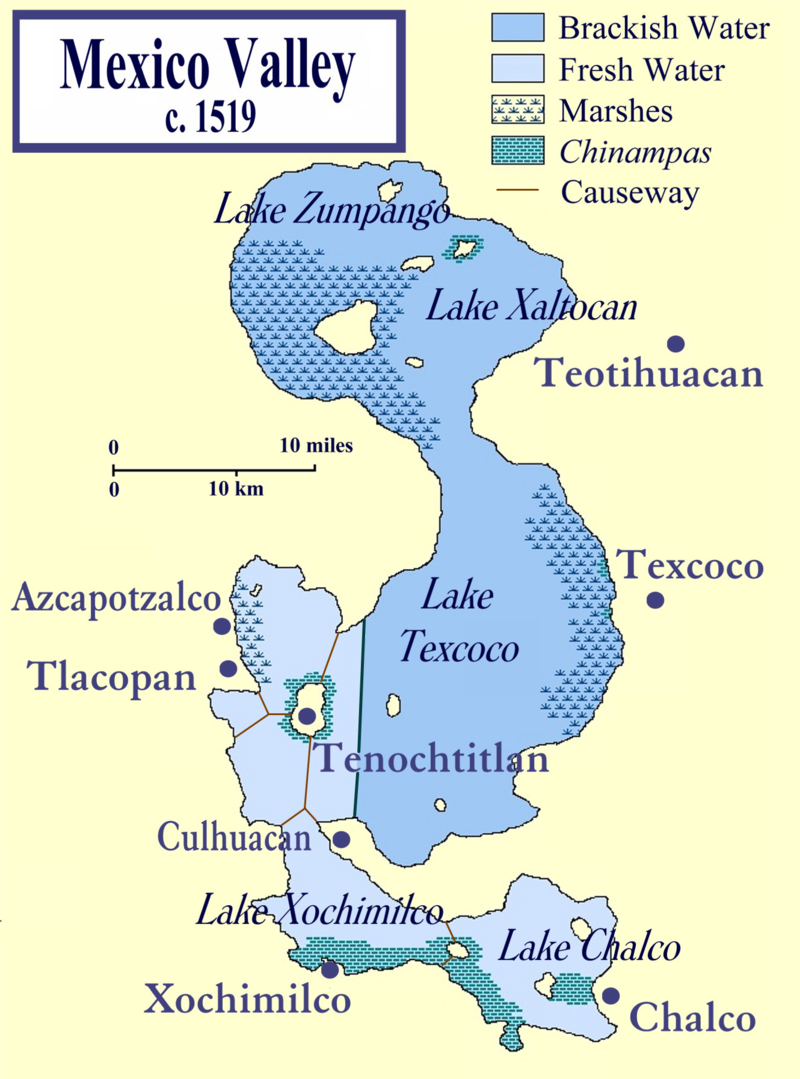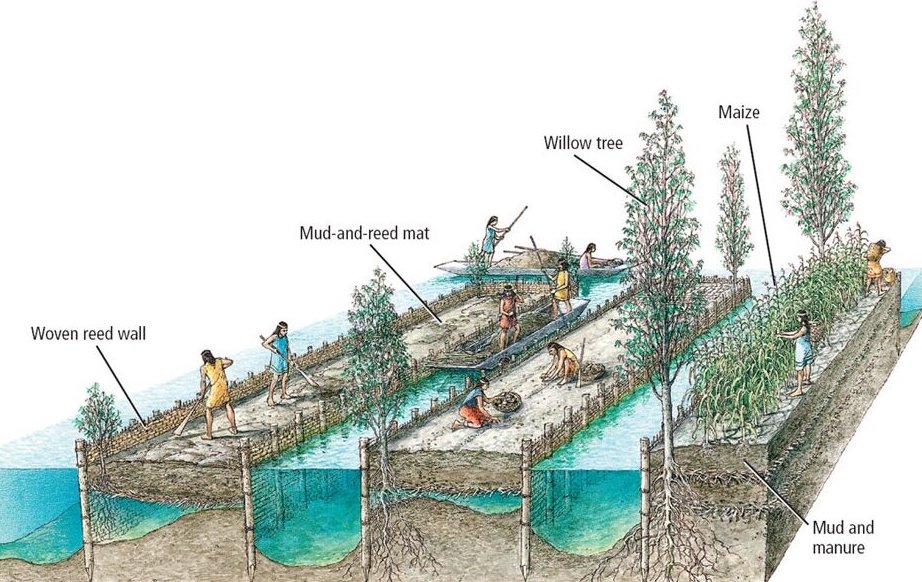Ancient Mesoamerican civilizations had to get creative and figure out a way to make sure their crops were getting supplied with water because they did not have an interconnected and unified irrigation system like other civilizations did. A well-known anthropologist by the name of Pedro Armillas discovered an abandoned irrigation system in the Teotihuacan Valley in 1954; this irrigation system consisted of "three diversionary dams, a rerouted stream, and a small canal" (Borland, Nichols, and Spence 1991:119). Dr. Joshua J. Kwoka (n.d.) discusses another well-known anthropologist by the name of Rene Millon who discovered in 1957 the Maravilla irrigation system in Teotihuacan that was used heavily during the Late Aztec period (AD 1300-1600). Teotihuacan was a "powerful and influential city" where the Aztecs decided this would be the city to grow and expand their empire at (Teotihuacan - History.com). Geographer William E. Doolittle (1995) did extensive research on irrigation development in Mesoamerica and discovered that these civilizations utilized various irrigation methods such as dams, canals, and even aqueducts to sustain the different kinds of crops they domesticated.
Along with these great irrigation methods, another method that is hardly discussed as being used are called chinampas.
What is a chinampa?
A chinampa is a man-made irrigation system technique that aids in the growth of crops. Chinampas were built in Mesoamerica near areas where there was a main source of water. Angelakis et al (2020) discusses how chinampas were a "model of sustainable agriculture because of their high productivity, use of waste as fertilizer, beneficial impacts on local fauna, responsible use of natural resources, and recovery of nutrients." According to The Archaeologist (2021), chinampas were constructed using stakes and reed plants in order to create a "fence" to keep in soil to house multiple crops. This continuous build up of soil made the chinampas look like floating islands, hence why they are also called the "floating gardens." With Mexico City becoming more dense in population, these incredible chinampas are unfortunately dwindling due to urbanization. The only chinampa still being used today is located in Xochimilco near Mexico City (see left image below). In 1987, this incredible last-surviving chinampa was made a UNESCO world heritage site (Angelakis 2020:23)!
Source: Britannica Source: The Archaeologist Source: The Archaeologist

Last-surviving Chinampa in Xochimilco near Mexico City Map of Chinampas in the Mexico Valley Construction of a Chinampa
